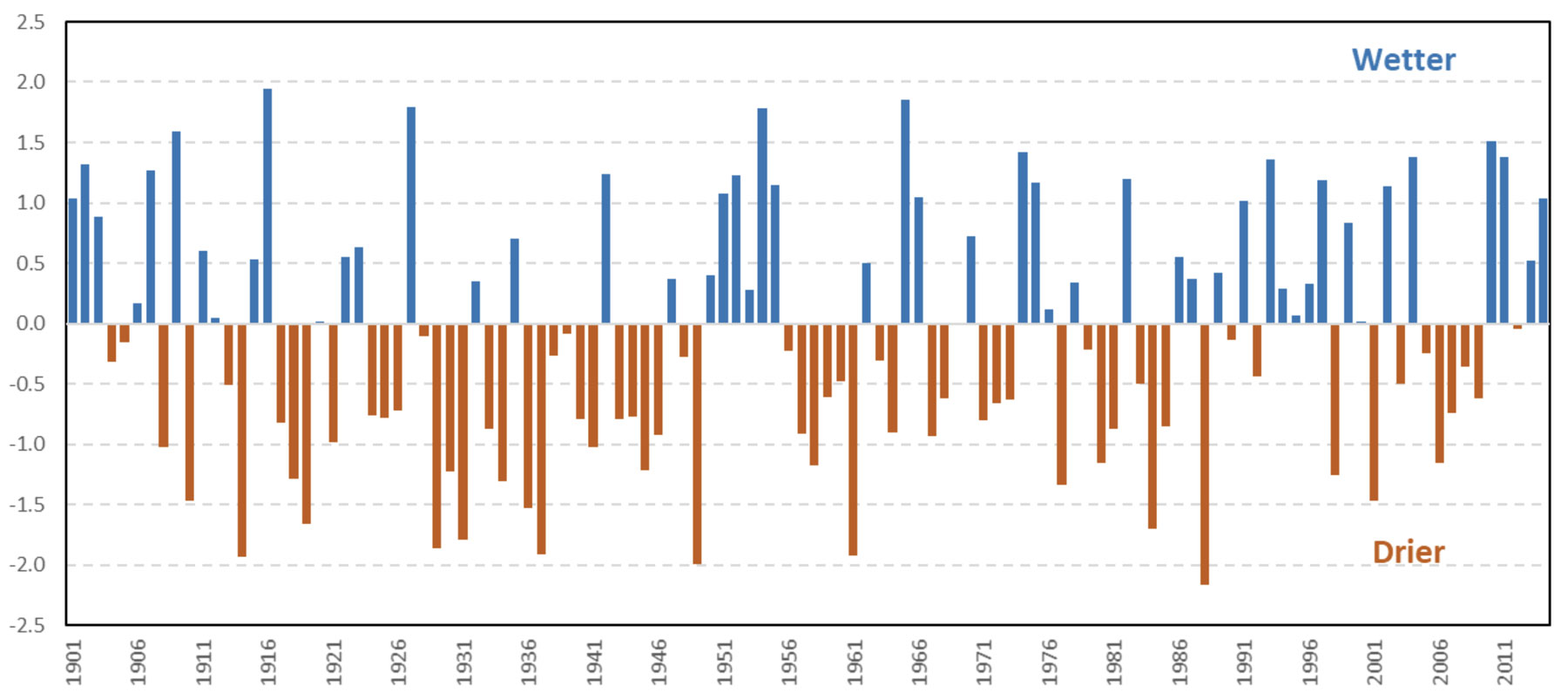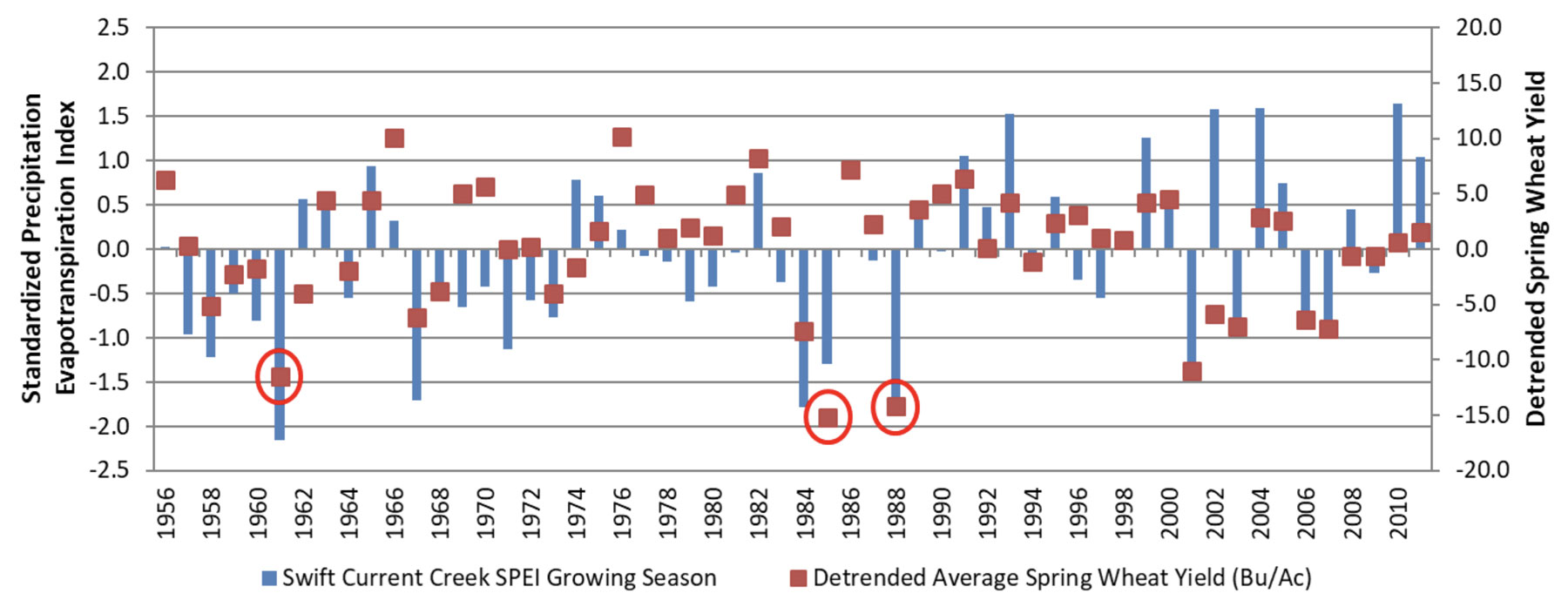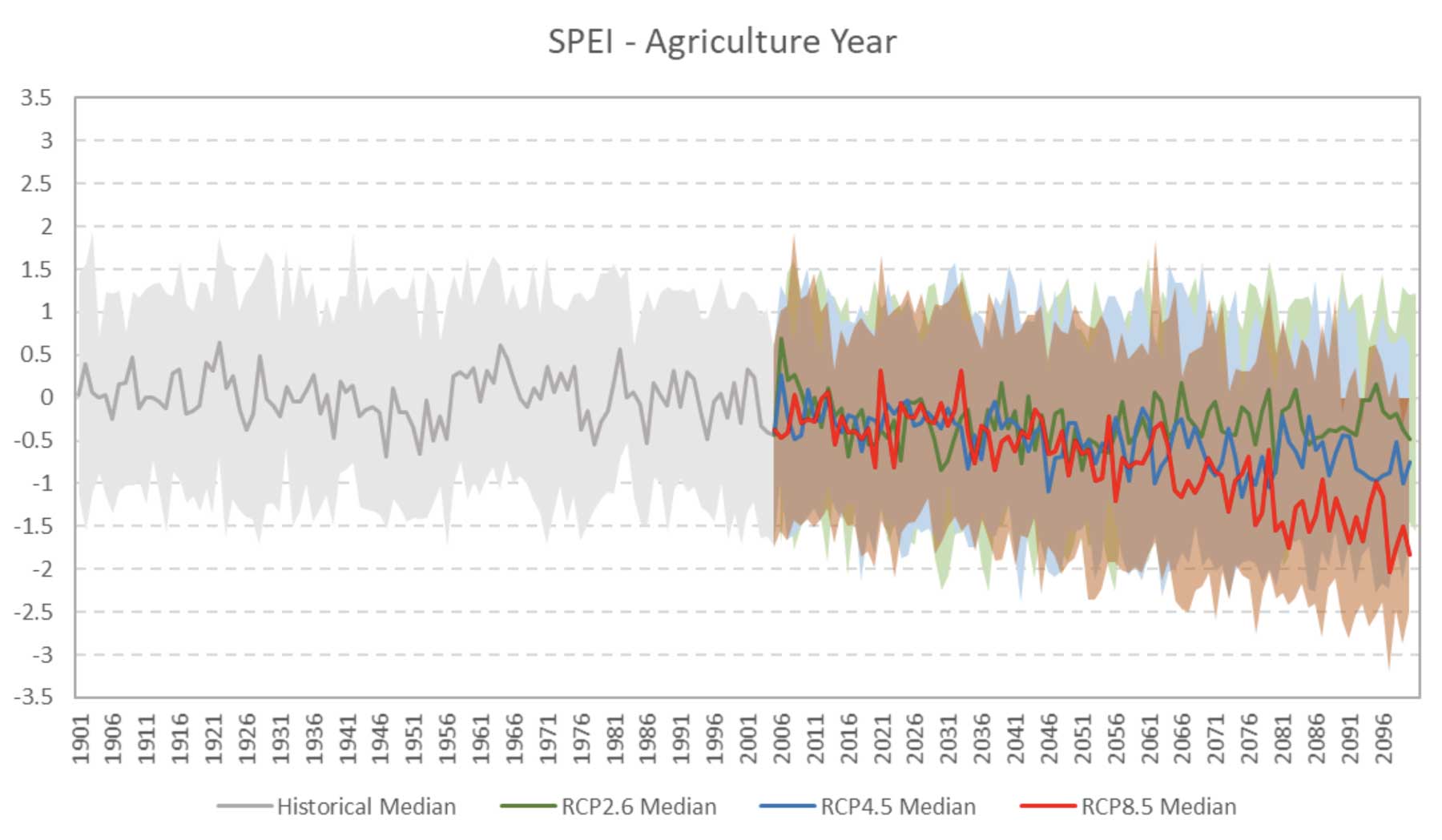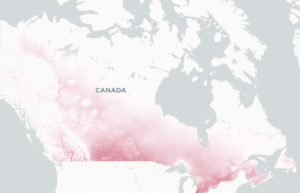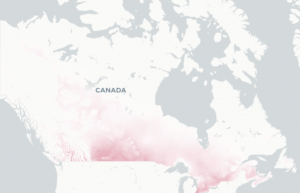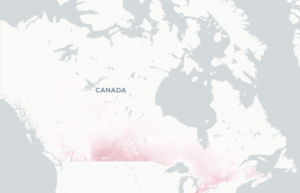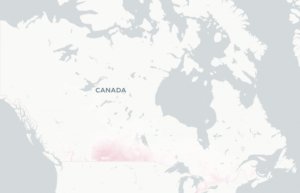Many other significant droughts have occurred in Canada, especially in the prairies. At least ten severe droughts have struck including those in 1910-11, 1914-15, 1917-20, 1928-30, 1931-32, 1936-38, 1948-51, 1960-62, 1988-89, and 2001-032,4 (Figure 1). These multi-year and large area droughts cause much more damage than shorter droughts and present greater challenges for adaptation. Several more recent droughts have also been documented. The extreme drought of 2015 in British Columbia, Alberta and Saskatchewan is notable as it has been partly attributed to climate change5. Droughts can cover large areas not only in Canada, but also across large parts of North America and elsewhere, and have been very intense and long lasting3.
Drought can be categorized into several types, such as meteorological, agricultural, hydrological, and socio-economic droughts6, because drought has impacts on so many systems. Meteorological droughts are determined by the degree, duration and other characteristics of the dry weather period. Agricultural droughts link the meteorological droughts to agricultural impacts, accounting for soil and plant properties, for example. Hydrological droughts are related to the effects of dryness on surface and ground-water supplies. Socioeconomic drought connects these other types of drought with their economic consequences.
Several measures of drought are in use, including the Standardized Precipitation Evapotranspiration Index (SPEI)7. The SPEI is a relatively simple index based on the water balance equation (precipitation minus potential evapotranspiration) which can be used to calculate drought at many time scales (e.g., one, three, six, nine and twelve months) for the historical period as well as for the future (using climate model output). Since this index includes potential evapotranspiration, the effects of projected increases in temperature in the future can also be included.
Climatic variability drives much of the year-to-year changes in agricultural production, especially in the Canadian prairies. Crops can fail in drought years and yields usually increase in wet years, unless moisture is excessive and/or agricultural land is flooded. For example, the drought years of 1961, 1985, and 1988 had the lowest average spring wheat yields for the Swift Current Creek Watershed in Saskatchewan (Figure 2)8. Water supplies for irrigation, livestock, homes, and many other uses become scarce during droughts.


